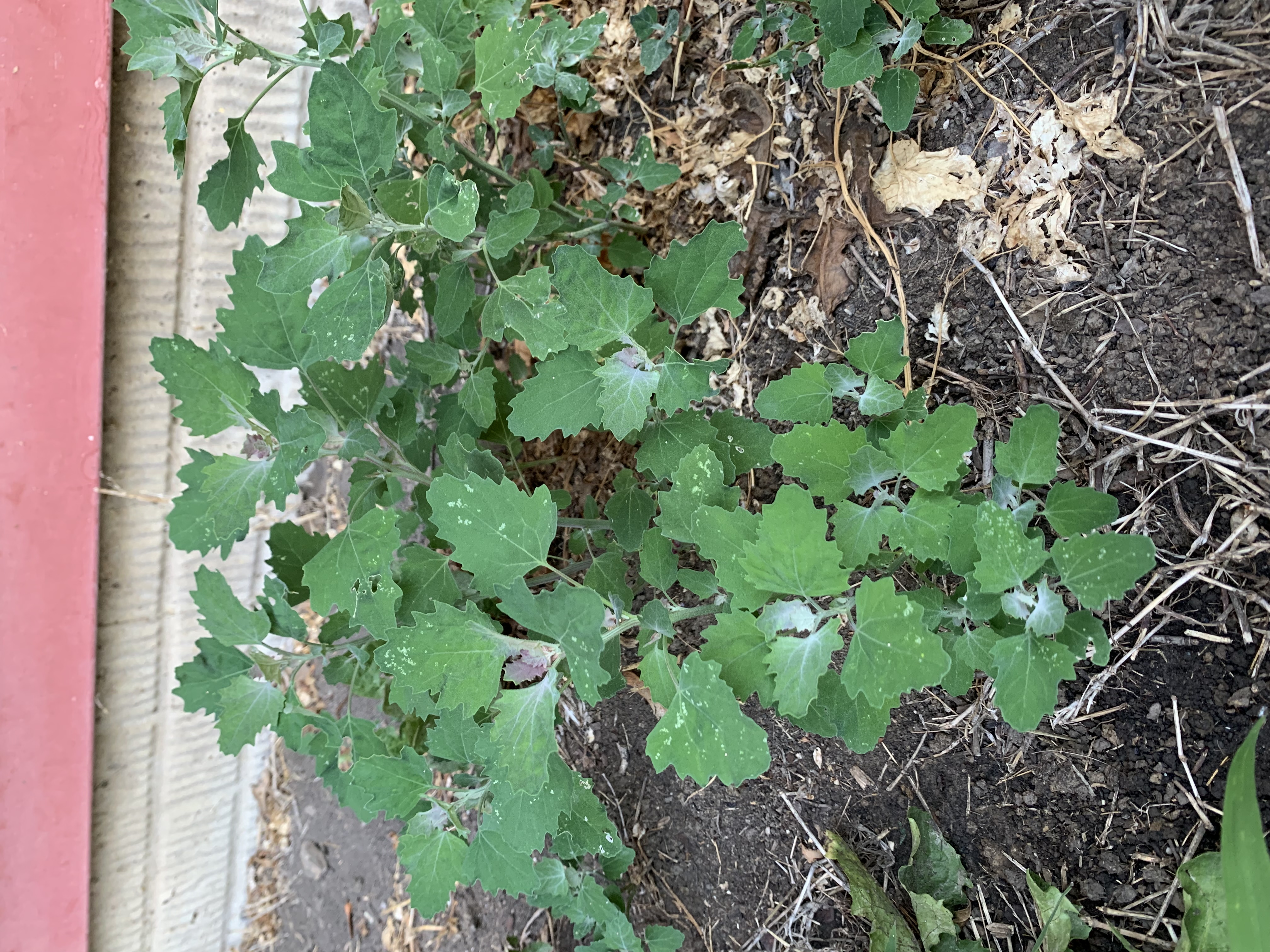There’s a space on Owl Acres shaped like a piece of pie between the garage and the study. Years ago I planted it in a wildly disorganized garden. It had day lilies, iris, tall individual lilies, yellow coneflowers, black-eyed susans, purple coneflowers, some hostas and anything anybody gave me to plant. This garden has been neglected for ten or more years while we lived away, so the only things remaining of my original efforts are a few coneflowers and two of the spiraea bushes. It needs to be tilled up and replanted. Until then, we mow it off. Meanwhile, one of the plants flourishing there now is lamb’s quarters (Chenopodium album). Recently, a friend pointed it out to me and said it’s good to eat as greens.
I remember my mother foraging for edible greens when I was a kid. She brought what she called pigweed in, washed it and boiled it like collard greens. Turns out pigweed is another name for lamb’s quarters. It’s also called white goosefoot, fat hen, mealweed, melde, and wild spinach.
Lamb’s quarters is an annual plant that spreads prolifically by seed. It can grow erect up to five feet tall. It has a squarish stem and somewhat succulent, egg-shaped or triangular leaves. The leaves are about two inches long and are a dull greyish-green. They have a white powder on them, especially on the underside of the leaves. The flowers bloom all summer, but are not at all showy. Each plant can, however, produce up to 70 thousand seeds. And, if the seed doesn’t germinate this year, it can stay dormant and viable for the next twenty years. No wonder it’s everywhere! It spreads like crazy, especially in disturbed soils like farmyards and roadsides (and my untended garden). Archeologists have discovered that the Blackfeet Indians collected those seeds and stored them for food in the 16th century. Lamb’s quarters is in the same genus as quinoa (Chenopodium quinoa), which is cultivated in South America as a grain.
Lamb’s quarters doesn’t look anything like a lamb. It doesn’t have any connection to sheep except that the sheep might eat it. The name has its origins in the British Isles in the 9th century. One telling says that in Scotland, the year was divided into quarters known as Candlemas, Whitsun, Lammas and Martinmas. Lammas began on August 1 and marked the beginning of the wheat harvest. The first harvested wheat was made into a loaf called a lammas loaf. It was taken to church to be blessed. Then it was either used as Communion bread or taken back home to put in the corners of the barn to keep the harvest safe. Or it was part of an annual feast. Lammas comes from the Anglo-Saxon word for “loaf Mass” or “bread feast.” Presumably, our lamb’s quarters was somehow involved in this feast, probably as salad or vegetable greens.
Lamb’s quarters is edible and highly praised for it’s nutritional value. It is related to spinach and beets is are rich in vitamins and minerals. Over-doing it can make you sick, though.
I don’t remember how my mother’s pigweed tasted, or even whether I liked it or not. Perhaps it’s worth revisiting?
Photo by Author. Alt text: Lamb’s Quarters by the house, after mowing and growing and mowing and growing all season.
